Dear creative friends,
Welcome to Issue No. 75 of the Studioworks Journal. This month, we step into a season of transformation. Like the butterfly, we, too, are always in motion—growing, shedding, becoming. Our butterfly-themed issue is an invitation to embrace the beauty of metamorphosis, both in art and in life.
For me, this theme is deeply personal. As I prepare to move my family across the world, I find myself in my own cocoon of change—letting go of the familiar, stepping into the unknown. And isn’t that what creativity asks of us? To trust the unfolding, to surrender to the process, to allow something new to emerge?
So wherever you are in your journey—whether stretching new wings or still nestled in the quiet of becoming—I hope you find something here that speaks to you. This is your gentle nudge to embrace change, to trust your path, and to step into your next beautiful phase.
xo,

As the days lengthen and the promise of spring begins to beckon, the world we inhabit is bursting with a sense of possibility. This moment's physicality, with its literal transformations and the re-emergence of life after the dormancy of winter, is deeply evocative. Leaning into this, we can look to the image of the butterfly, with its ample symbolism ready-made to explore reinvention and renewal.
As artists, we can learn much from the cycle of going inward, cocooning, liquidating what we once were, and then reforming into something entirely new. This process has long been a valuable source of inspiration and is ideally suited to this season. Join me in examining the history of artists who embraced the butterfly's symbolism and those who exhibited the bravery, flexibility, and dynamism to allow their creative selves to continuously evolve across their lives and careers.
The magic of a butterfly’s life cycle has always captured the human imagination, making it a universal symbol of transformation. Their ephemeral nature, fragility, and beauty also make them excellent subjects for artists. From Mexico to China, Native America to Europe, the humble butterfly has carried rich and varied symbolism.
In Greek, the word for butterfly, psyche, is the same as the word for soul. This theme also emerges in Mexico with the coinciding of the Dia de los Muertos and the migration of monarch butterflies, creating a link between butterflies and the souls of loved ones. In Europe, the Celts had lore of butterflies being the souls of children looking for mothers. In Japan, butterflies could represent a person’s soul or serve as a guide to their soul in the afterlife. Thus, it is clear that the butterfly is a powerful symbol of the soul, death, and rebirth across human cultures.
Many artists have utilized this potent symbolism, incorporating butterflies into their work. For example, Salvador Dali enjoyed using the butterfly to represent transcendence and fleeting beauty. Tapping into the connection with the soul, Dutch Golden Age Painter Maria van Oosterwyck employed butterflies in her vanitas paintings to contrast the soul's eternal nature with the fleeting aspect of worldly luxury. In modern times, contemporary artist Damian Hirst has made butterflies a career-defining subject. For Hirst, butterflies represent death and resurrection and are universally appealing.
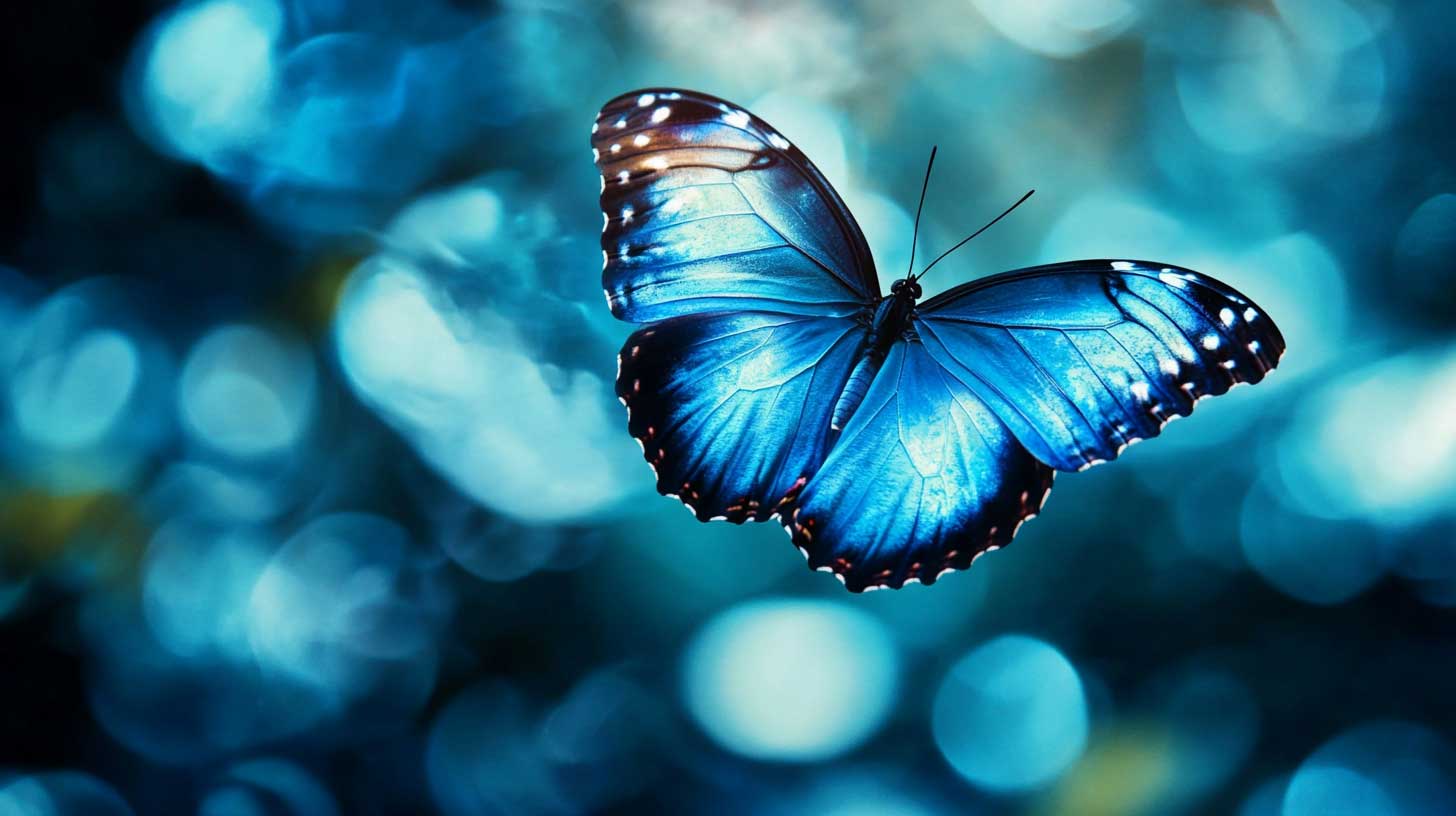
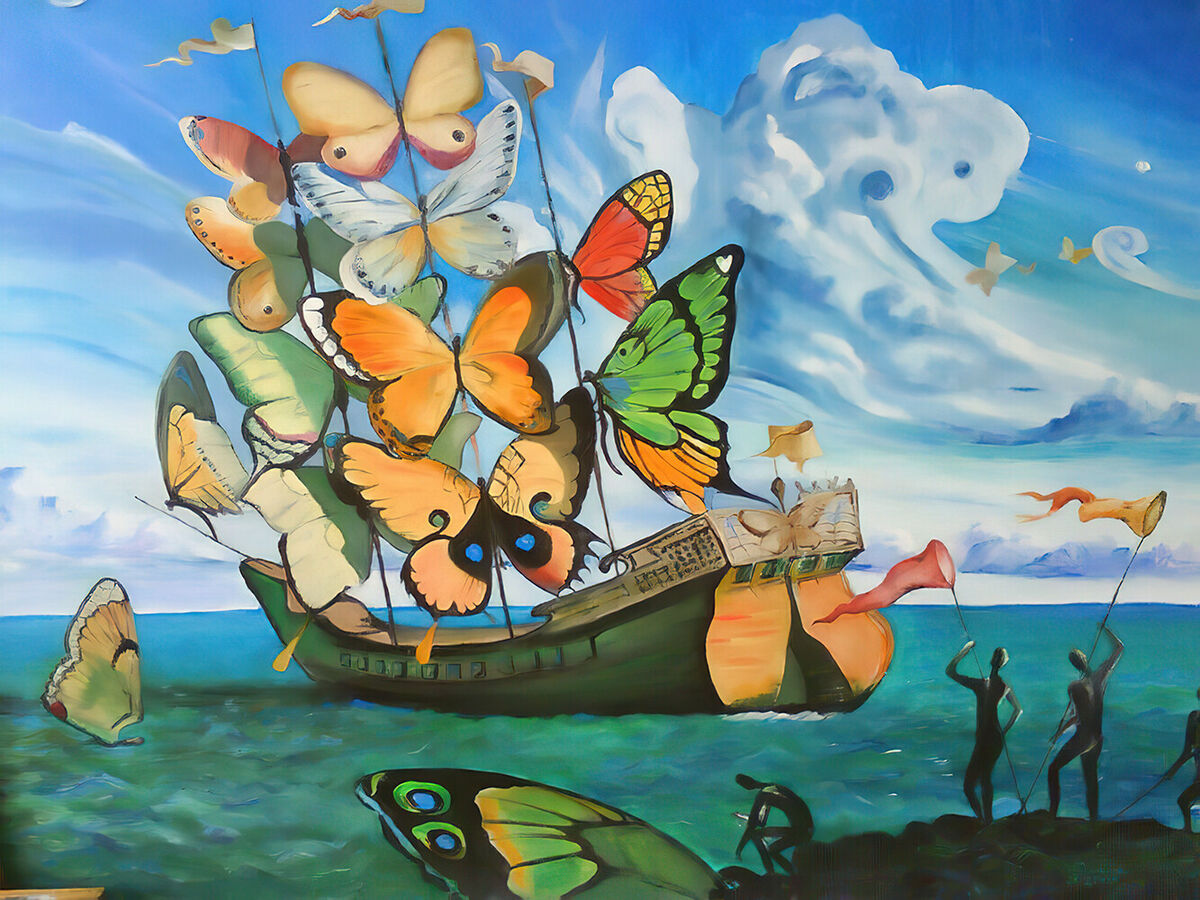
By Salvador Dali, 1937
As some artists flock to the butterfly's symbolism in their work, others demonstrate the butterfly’s character in their process as creators. It takes courage to leave behind what has worked before and embrace something new. Or, as was the case with Frida Kahlo, take a terrible situation and use it to make deeply personal and profoundly brave art. After her life-altering accident, Frida could have retreated into herself and chosen not to continue to create. Instead, she revealed her vulnerability and explored themes of identity, pain, and rebirth through her self-portraits.
In a very different manner, the evolution of Vincent van Gogh revealed his commitment to his creative spark. He courageously left behind the somber, reflective tones of his Dutch Period to explore the vibrancy and bright color that appealed to him during his time in France. This process revealed a transformation not only in style but also in his emotional engagement with his subjects
In contemporary art, Yayoi Kusama demonstrates the boldness to change media, going beyond painting into installations and performance art. Her transformation reveals her strength in allowing personal struggles with mental health to metamorphose hardship and stigma into something beautiful and healing, inspiring us to embrace change and turn challenges into opportunities for growth.
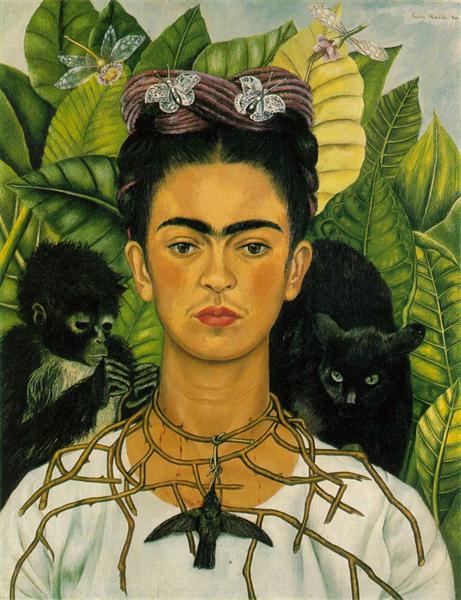
Self-Portrait with Thorn Necklace and Hummingbird
By Frida Kahlo, 1940

Great Peacock Moth
By Vincent van Gogh, 1889
Love is too big an experience to be limited to one word. It requires expansive concepts, symbols, and passionately written letters; even then, the heart can be left yearning for more.
As artists, tapping into the universality of symbols allows us to express both personal and collective experiences. Equally, exploring different aspects of our creative selves enables us to evolve and adapt. Art serves as a mirror, revealing internal struggles while reflecting the world at large. By embracing both symbolic and personal transformation, artists create work that is deeply resonant and enduring.
Like the butterfly, artists are beings of change, adapting and evolving through life’s creative cycles. Recognizing this process enriches both our artistic practice and personal growth, reinforcing that transformation is not an endpoint but an ongoing journey.
The butterfly is a universally compelling symbol of life, death, and renewal, mirroring the continuous evolution of artists. Just as the butterfly moves through distinct stages of metamorphosis, artists undergo reinvention, emerging with fresh perspectives and renewed creative energy. By embracing transformation, we not only refine our artistic practice but also deepen our connection to the ever-changing world around us. The spirit of the butterfly reminds us that change is inevitable—and through it, we can find endless inspiration and rebirth.

An artist’s journey is often fraught. There are moments of great productivity and ones where creativity feels like it has gone on vacation, and we’re eddying around in the backwater of old ideas.
Fortunately, each phase has its value, and by honoring the importance of contemplative and internal times, we can deliberately cocoon, cultivating the space for new ideas to emerge.
Join me in generating a creative chrysalis, wherein what came before can be rendered down, making room for something winged, effervescent, and beautiful to emerge. By embracing transformation, we can reframe gestation—a period of development and growth—into a cherished aspect of our creative path.
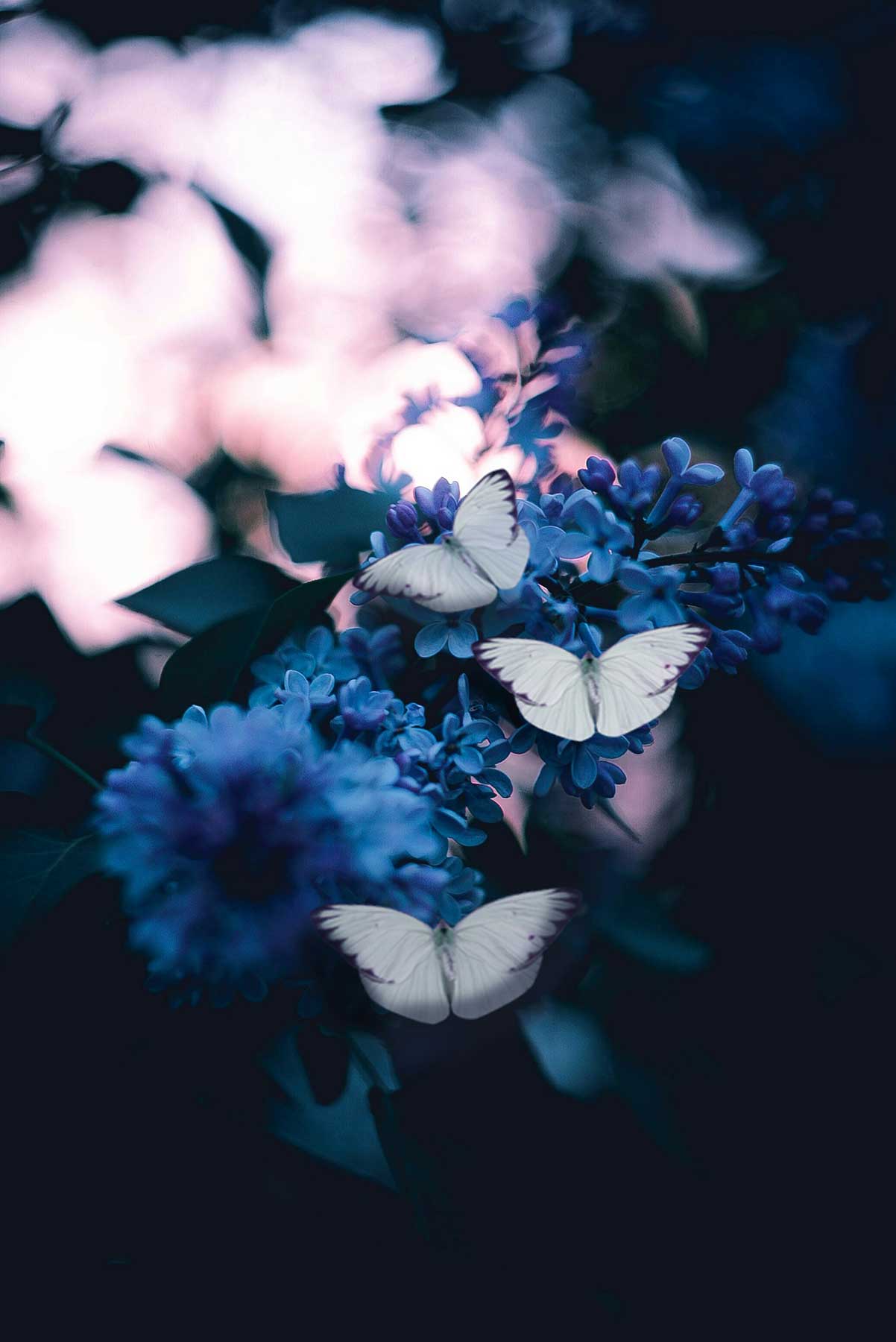

The cocoon is a vital stage in the miraculous process of a caterpillar's transformation into a butterfly. It is a protective envelope where the right conditions of humidity, temperature, isolation, and avoiding predation allow necessary development to occur. As artists, we, too, have times when we need a space that fosters introspection, seclusion, and reinvention, where we are protected from the cacophony of outside influences.
The first step in creating this space is recognizing that it is necessary. We can easily get swept up in the frenzy of human activity, believing that we must always be in go mode, ready for action. However, as creatives, this is a mistake. We are much better served by finding our way via the natural rhythms of transformation that govern our planet.
We can emulate artists like Georgia O’Keefe retreating to the desert to create and enact a process of physical removal from our day-to-day lives. However, we can also foster a mindset that doesn’t require such upheaval. There is something to be said for the creation of quiet spaces or times within the framework of our days. Sometimes, all that is needed is the openness to being still and mentally generating an attitude of experimentation and an interest in different media. Little nudges can go a long way.
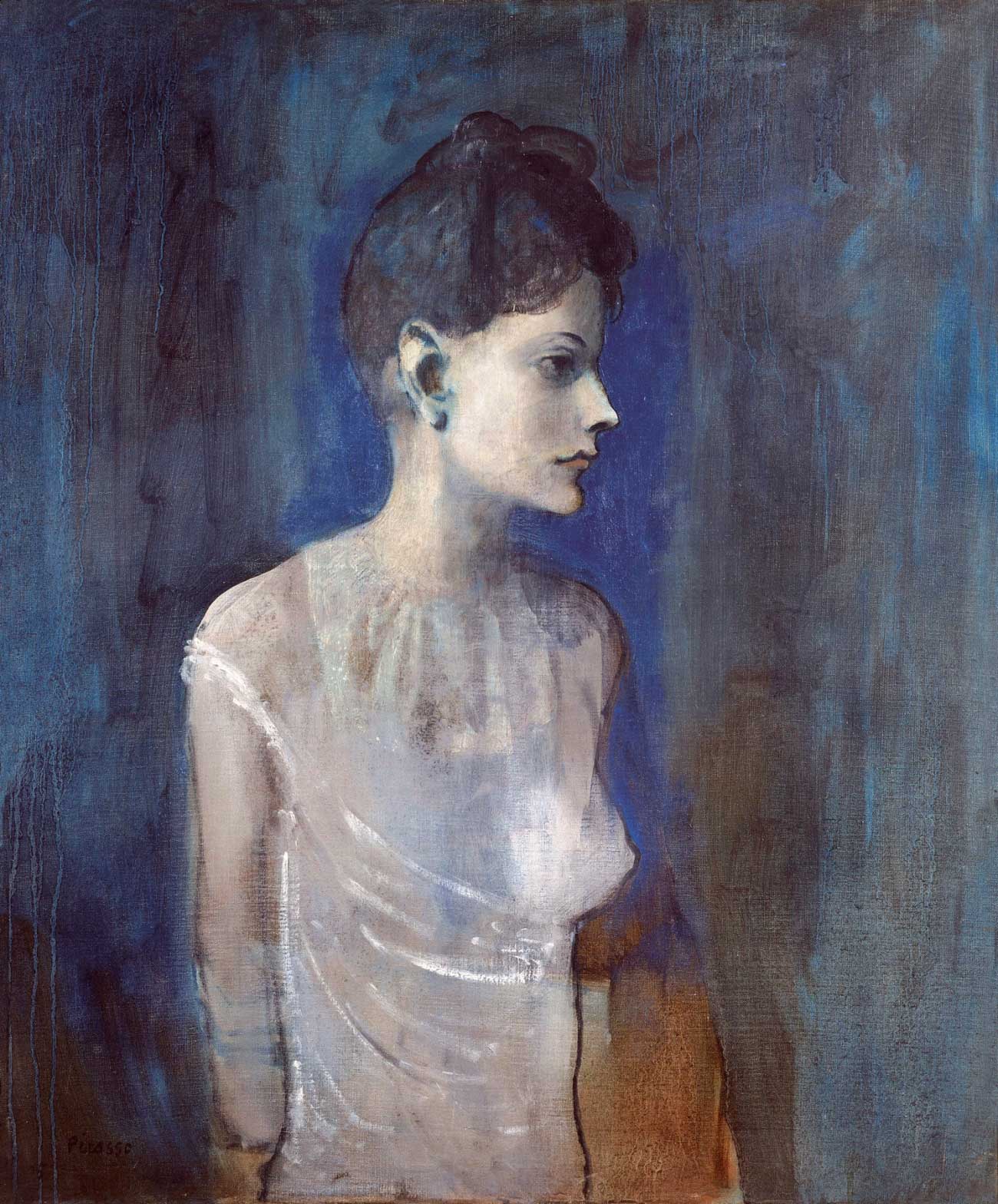
Young Woman in a Chemise
By Pablo Picasso, 1904-05
Sometimes, artists undergo radical transformations, and the world takes notice. Like Pablo Picasso, we might have a Blue Period. However, not all of us paint in such dramatic strokes. For every Bowie who makes an art of reinvention, fashioning themselves as the Chameleon of their craft, there is the more understated Al Hirshfield, who began as a sculptor and painter and became one of the most influential cartoonists of all time.
The point is to explore for yourself what kind of transformation your work needs. How we reinvent ourselves is personal and does not need to adhere to an external vision. Embrace the right type of risk and novelty for you, which will foster growth without feeling forced.

It’s easy to talk about transformation, but most of us can benefit from some actionable steps. As hinted at earlier, much of what is needed originates in mindset. For starters, embrace an attitude of experimentation. Whatever is familiar to you, shake it up. Try out a new media, perspective, or style.
You don’t have to commit to the change, but the experience will recalibrate how you approach creating.
In keeping with the previous idea, dive into discomfort. You don’t want to play it safe when transformation is the goal. Instead, you want to embrace uncertainty and the possibility of failure to push yourself into a new attitude. This is where true growth lies.
Doubling down on the previous two suggestions, explore new influences. Take a walk through art history and try out a style that is brand new to you. Point at a spot on the globe at random and examine that place's culture and unique artistic creations. For instance, you could explore the vibrant colors of Mexican art or the intricate patterns of Islamic art. Also, go out into your community and find other artists, join a collective, or otherwise engage with other creators.
After implementing the above suggestions, bring yourself back down to earth. Remember that growth isn’t always linear and that quiet, contemplative moments of incubation can help you reorient after externalizing and utilize what you gathered from the world at large.
The world is teeming with symbols, and the image of the butterfly is one of the most evocative and universal we know. It reminds us of the necessity of incubation while also promising rebirth and transformation. In addition, it urges us to have the courage to enter the cocoon in order to evolve, demonstrating the beauty of what can emerge on the other side.
Transformation is a lifelong process; as artists, we will always be in flux, refining our voices and exploring who we are and who we want to become. Like the butterfly, we will continue to require the chrysalis to emerge into the world with new ideas and creations to share in a beautiful life cycle of reinvention and renewal.
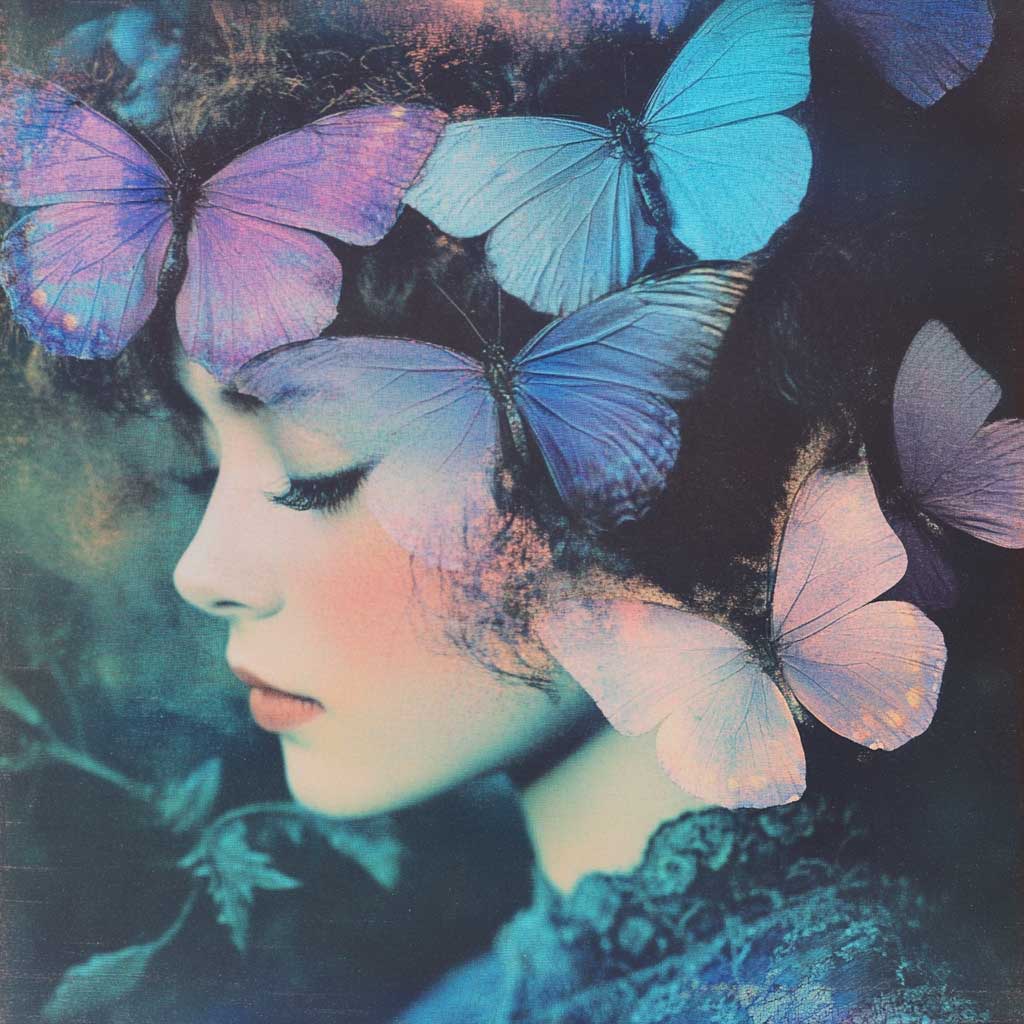
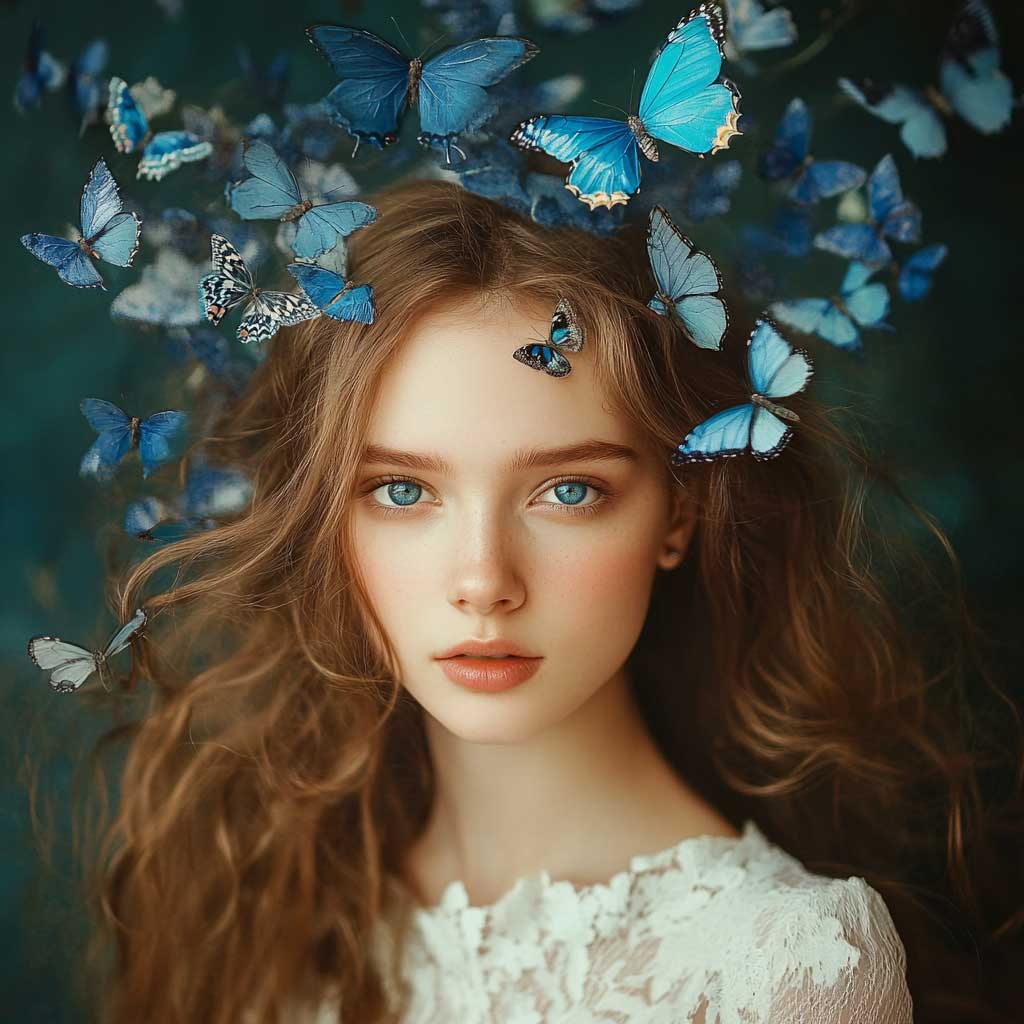
The dictionary definition of devotion is:
Becoming (noun): The process of coming into being; a transformation.
The Art of Becoming
Lately, I’ve been thinking about what it means to become. Not just as an artist, but as a person navigating change—moving across the world, shedding old layers, stepping into something new. The word itself holds a quiet power. It suggests movement, a transition from one state to another. It is not about arriving, but about the act of changing, evolving.
Art, at its core, is about becoming. Every blank page or canvas is an entry point into something unknown. The process is rarely linear—there are missteps, overworked layers, moments of doubt. But even in frustration, something shifts. A mark leads to another, a mistake turns into an idea, and suddenly, we are somewhere new.
As artists, we often long for mastery, for certainty in our work. But perhaps the real magic is in allowing ourselves to remain in motion—to embrace the becoming rather than the finished product. To trust that even in uncertainty, transformation is happening.
So wherever you are in your creative journey—whether just beginning, reinventing, or finding your way back—I hope you give yourself permission to be unfinished. To explore, to shift, to become.
Because the beauty isn’t just in what we create—it’s in who we are becoming as we create.
Let’s tap into our creative intuition and do some self-reflective work inspired by our theme. Below you will see our month’s Oracle/Tarot card spread. But fear not, if you are not one drawn to using oracle or tarot cards, no worries, just use the accompanying reflective questions as writing prompts for your journals!
Here’s a three-card oracle card spread designed to tap into your creative intuition and our themes. This spread and its journaling prompts encourage reflection on the artist’s inner wisdom, the magic of inspiration, and the journey of trusting intuition in the creative process.
This card represents where you are right now in your creative evolution. It may highlight an area of growth, an idea waiting to emerge, or a mindset that needs to shift.
This card reveals what you need to release or trust in order to move forward—perhaps self-doubt, perfectionism, or fear of change. It invites you to embrace the in-between, the unknown, the messy middle.
This card offers insight on how to spread your wings and embody your creative truth. It might suggest a new practice, an affirmation, or a way to express your most authentic self through art.
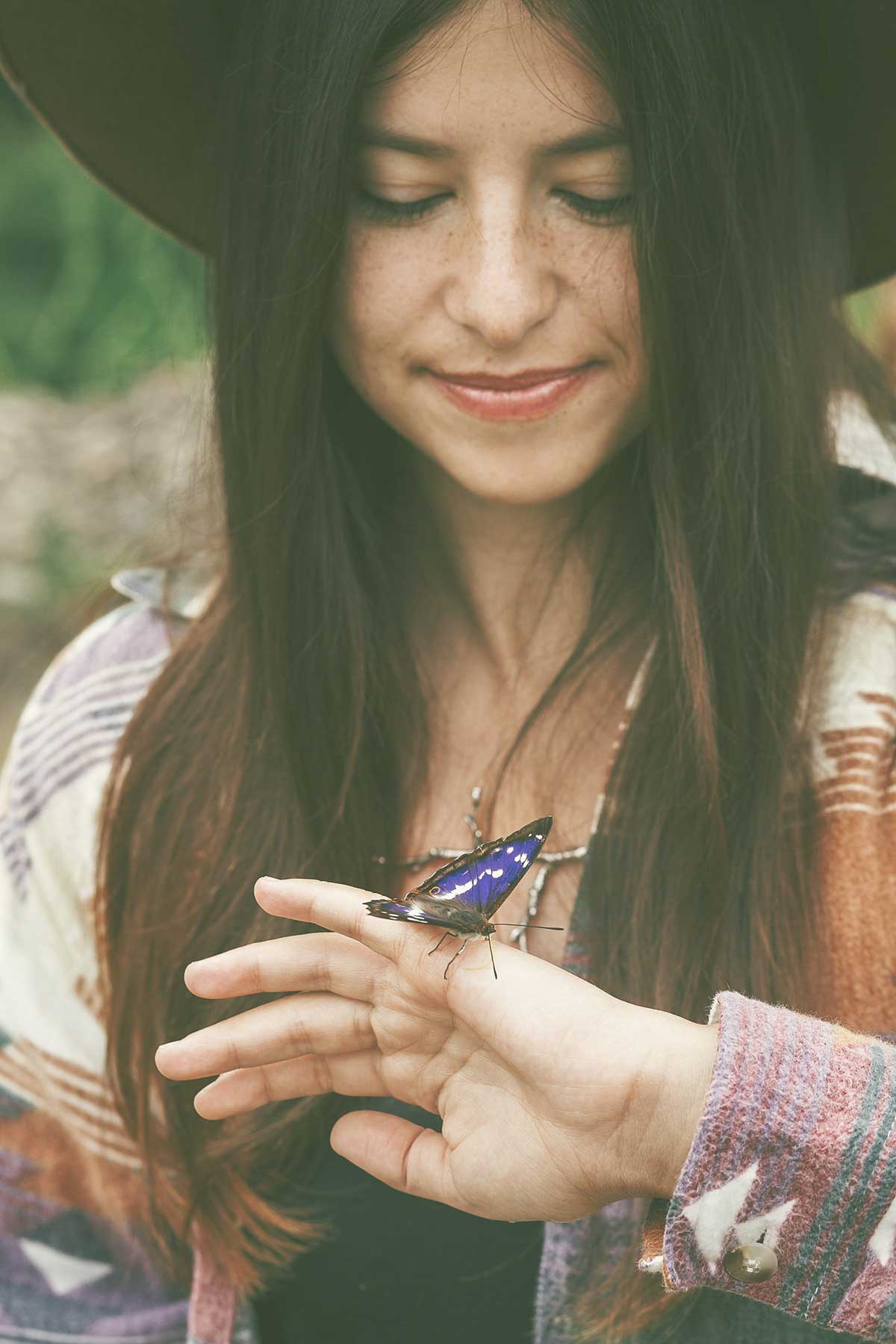
Treat yourself to this wonderful and powerful meditation from one of my favorite meditation creators - Rachel Hillary
Here’s a little more information from Rachel…
This meditation is a journey in physical and emotional healing, in listening to the energies of our body and how it speaks to us. We meditate together in the woods and allow ourselves to be comforted by a healing divine light of gold and white. A kaleidoscope of butterflies joins us in the sunlit woodland and continues to harmonise our energies
I hope you enjoy, sending you love.
lots of love,
Rachel
Each month we will have a positive affirmation. I recommend you print out this affirmation and put it in your sketchbook or somewhere in your studio. Recite the affirmation out loud each time you show up to create. Saying words aloud is powerful and can begin to re-write some of our own limiting beliefs or calm our fears. Try it now…
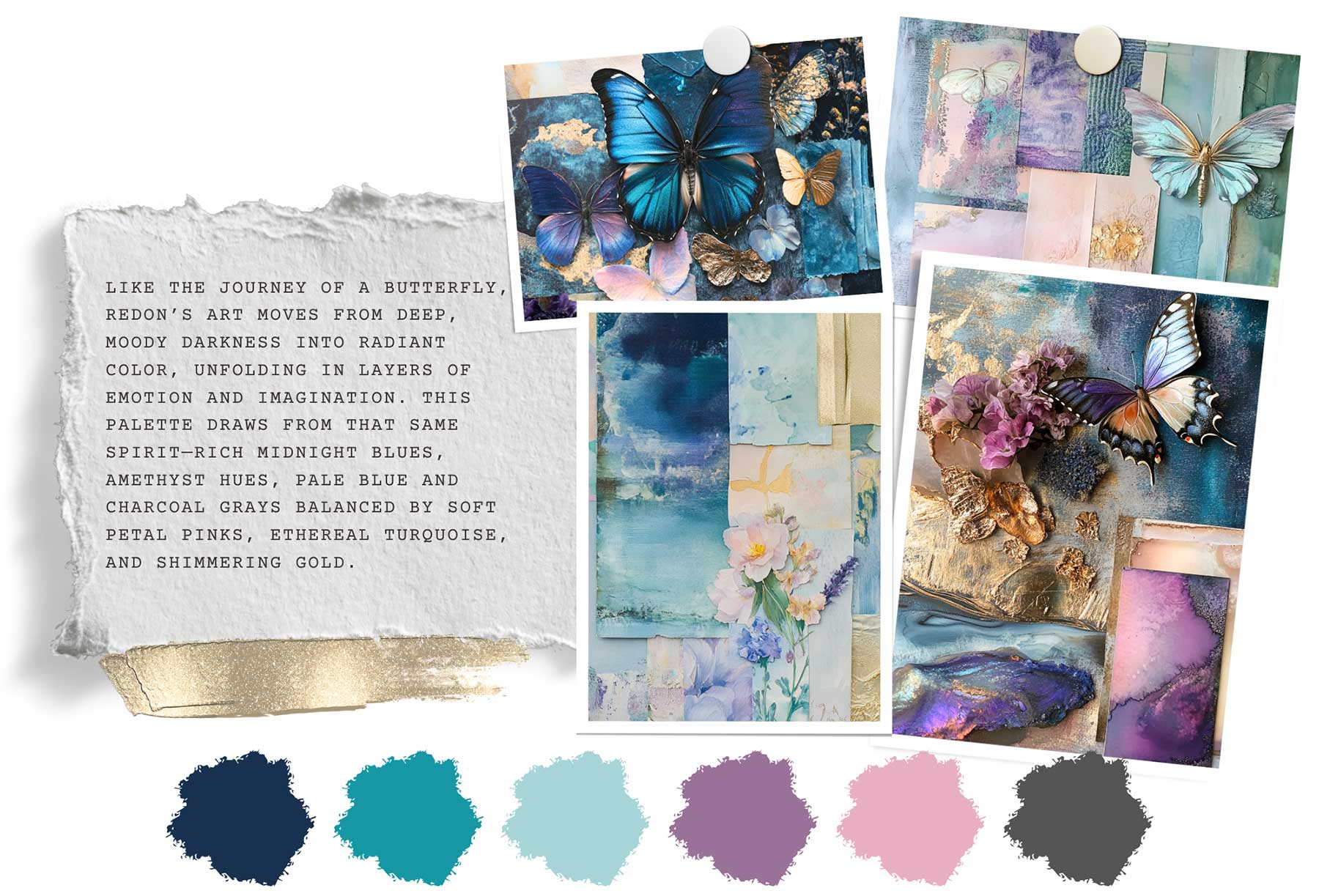
I have to admit—I couldn’t resist bringing Odilon Redon back into the pages of Studioworks Journal (we featured him for the first time in Issue No. 34). This is the second time I’ve featured him in our magazine, and for good reason. His work, filled with mystery and luminosity, perfectly embodies the themes of metamorphosis, renewal, and creative evolution that define The Butterfly Issue. Like the journey of a butterfly, Redon’s art moves from deep, moody darkness into radiant color, unfolding in layers of emotion and imagination. This palette draws from that same spirit—rich midnight blues, amethyst hues, pale blue and charcoal grays balanced by soft petal pinks, ethereal turquoise, and shimmering gold. It reflects both the depth of transformation and the lightness of emergence, reminding us that every creative journey is a process of becoming.
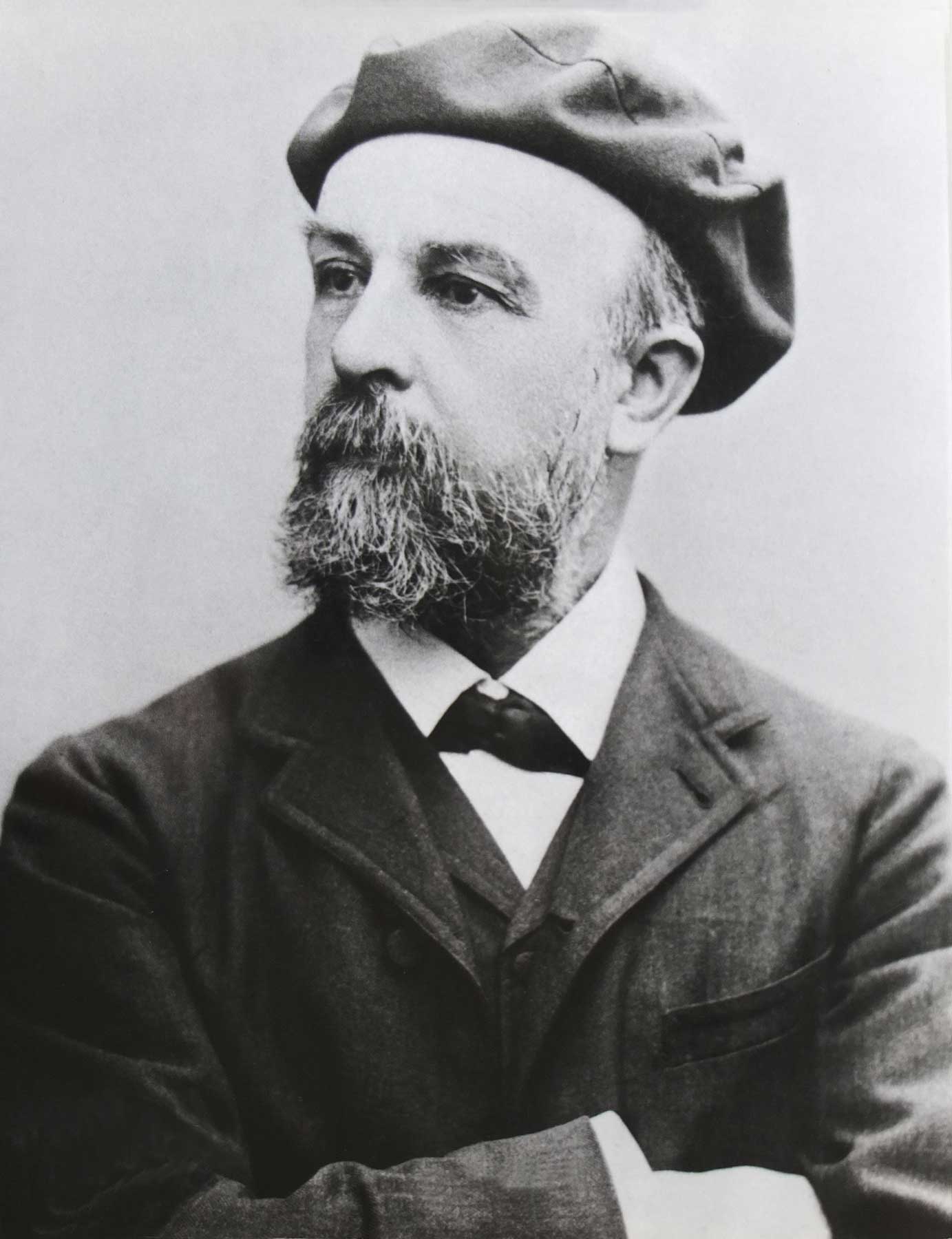
Odilon Redon (1840–1916) was an artist who understood transformation not just as a theme in art but as a lived experience. His creative evolution, from the dark, shadowed worlds of his early works to the radiant, dreamlike pastels of his later years, mirrors the metamorphosis of the butterfly—a symbol that appeared in several of his paintings. His life and work are a testament to the idea that change, even when uncertain, is where the truest beauty unfolds.
Born in Bordeaux, France, Redon’s early career was defined by shadowy, surreal charcoal drawings known as Les Noirs—moody, otherworldly compositions that often depicted floating heads, strange creatures, and dreamlike figures. These early works reflected an inner world of introspection and mystery, much like the cocoon stage of a butterfly’s transformation.
But something shifted in Redon over time. As he moved into color, his work took on an ethereal, almost weightless quality. His pastels and oil paintings, created in the last decades of his life, burst into luminous hues—sapphire blues, golden ochres, and delicate pinks. This transition from dark to light was not simply an aesthetic choice but a reflection of Redon’s personal and artistic growth.
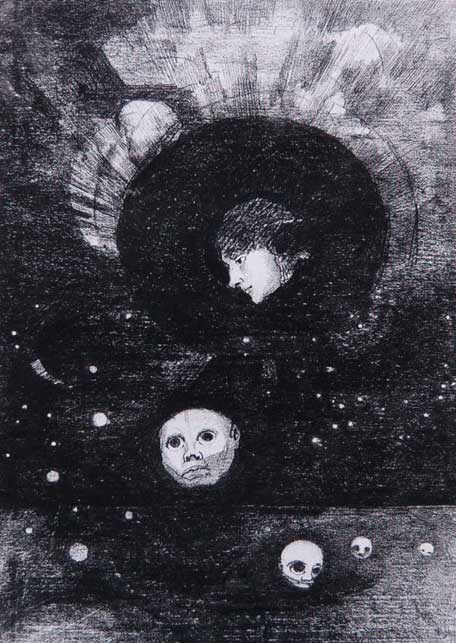
Germination
By Odilon Redon, 1879
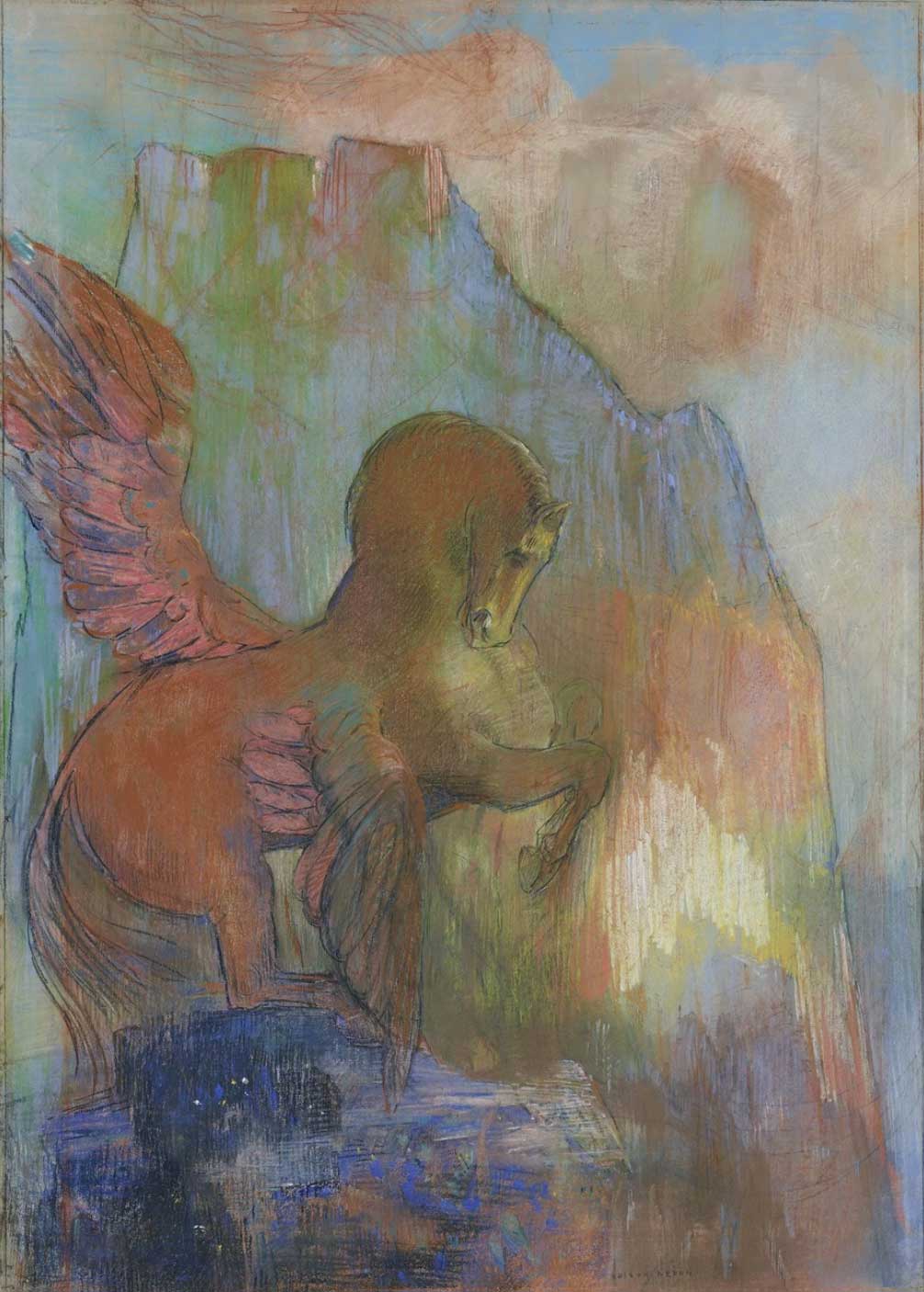
Pégase
By Odilon Redon, 1895
It is no surprise that butterflies began appearing in Redon’s paintings during his later years. One of his most famous works, "Butterflies" (1910), captures these delicate creatures in radiant color, floating against a glowing, dreamlike background. They are not simply decorative but deeply symbolic—representing the soul, transformation, and the fleeting nature of beauty.
Another work, "The Birth of Venus" (1912), reimagines the classical myth with an almost weightless quality. The Venus figure appears to emerge from the canvas, much like a butterfly breaking free from its chrysalis. Redon’s flowers, too, can be seen as symbols of metamorphosis—vivid blooms that seem to vibrate with life, constantly unfolding and evolving.

Butterflies
By Odilon Redon, 1910
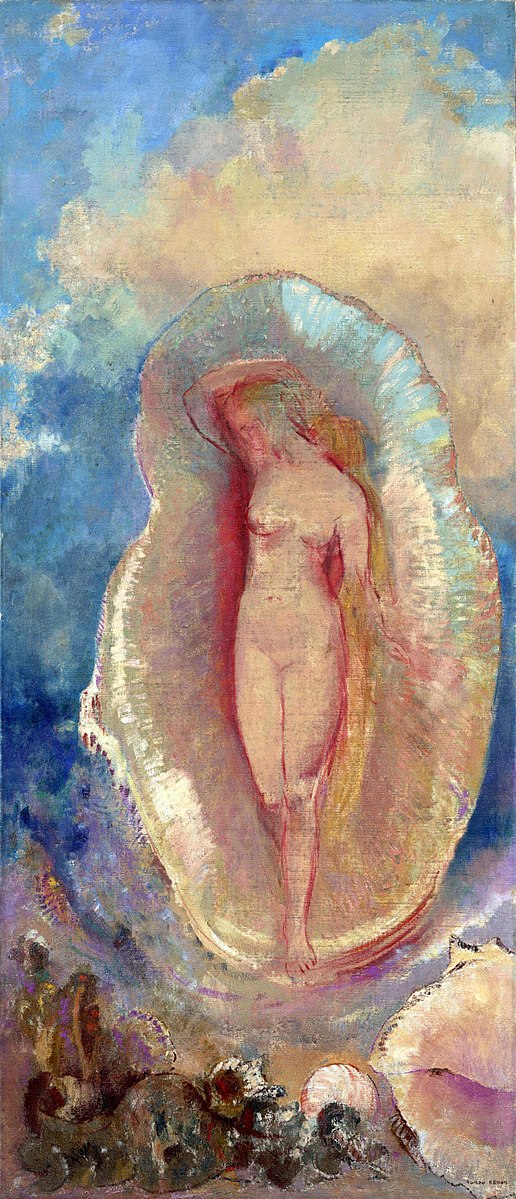
By Odilon Redon, 1912

Flowers
By Odilon Redon, 1900
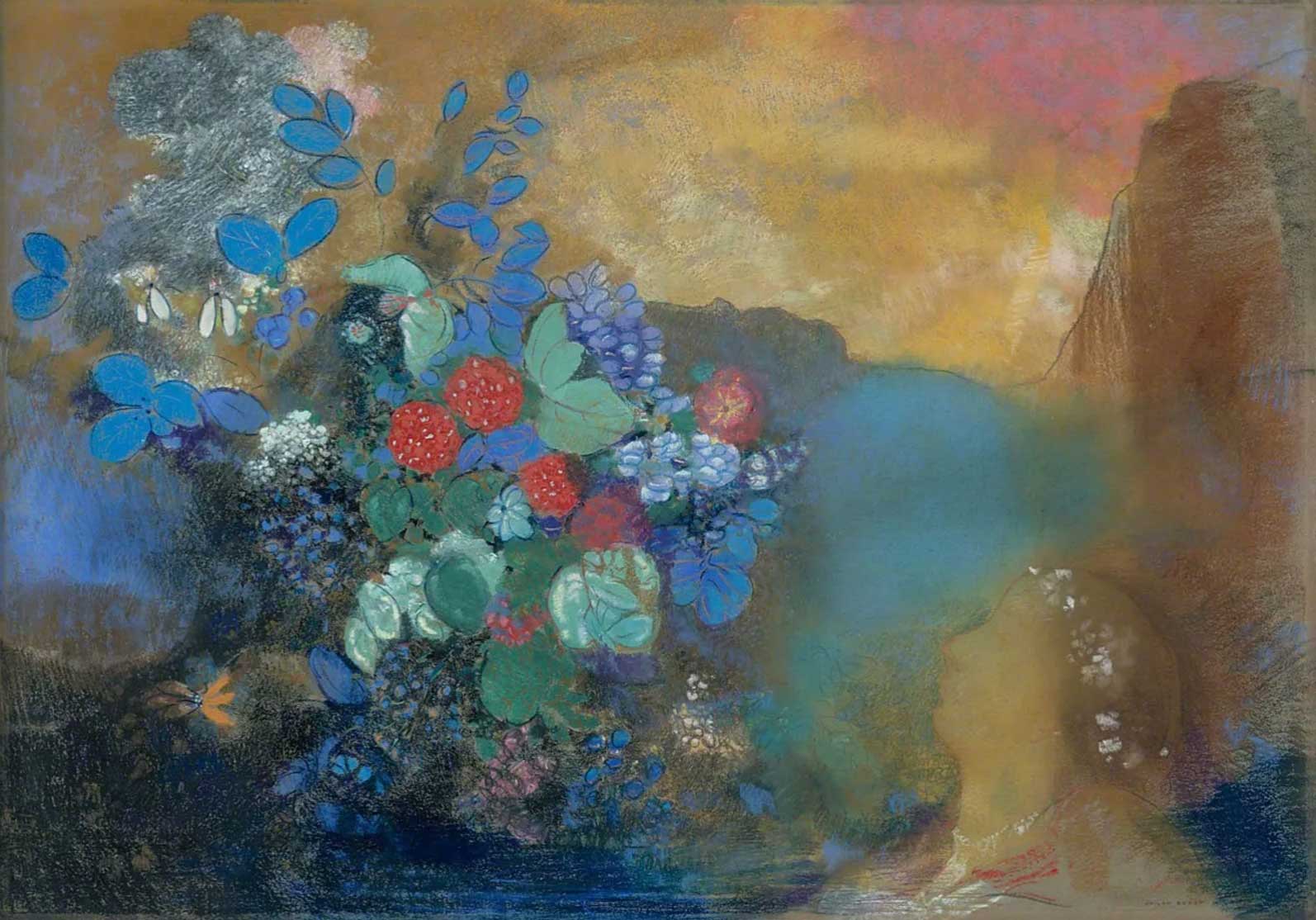
Ophelia among the flowers
By Odilon Redon, 1905
Redon’s journey is one that every artist can relate to. His early years were filled with uncertainty, exploration, and even doubt. Yet, he allowed himself to evolve, to shift, to step into something new. His transformation from dark, mysterious drawings to luminous, dreamlike paintings reminds us that art—like life—is not static. It is a process of becoming.
As we embrace the theme of this month, we can look to Redon as a guide. His work teaches us that transformation is not something to fear but to welcome. Creativity, like a butterfly, requires trust—it asks us to move through uncertainty, to allow ourselves to change, and to step into the unknown with a sense of wonder. And when we do, we just might find ourselves, like Redon, emerging into something more radiant than we ever imagined.
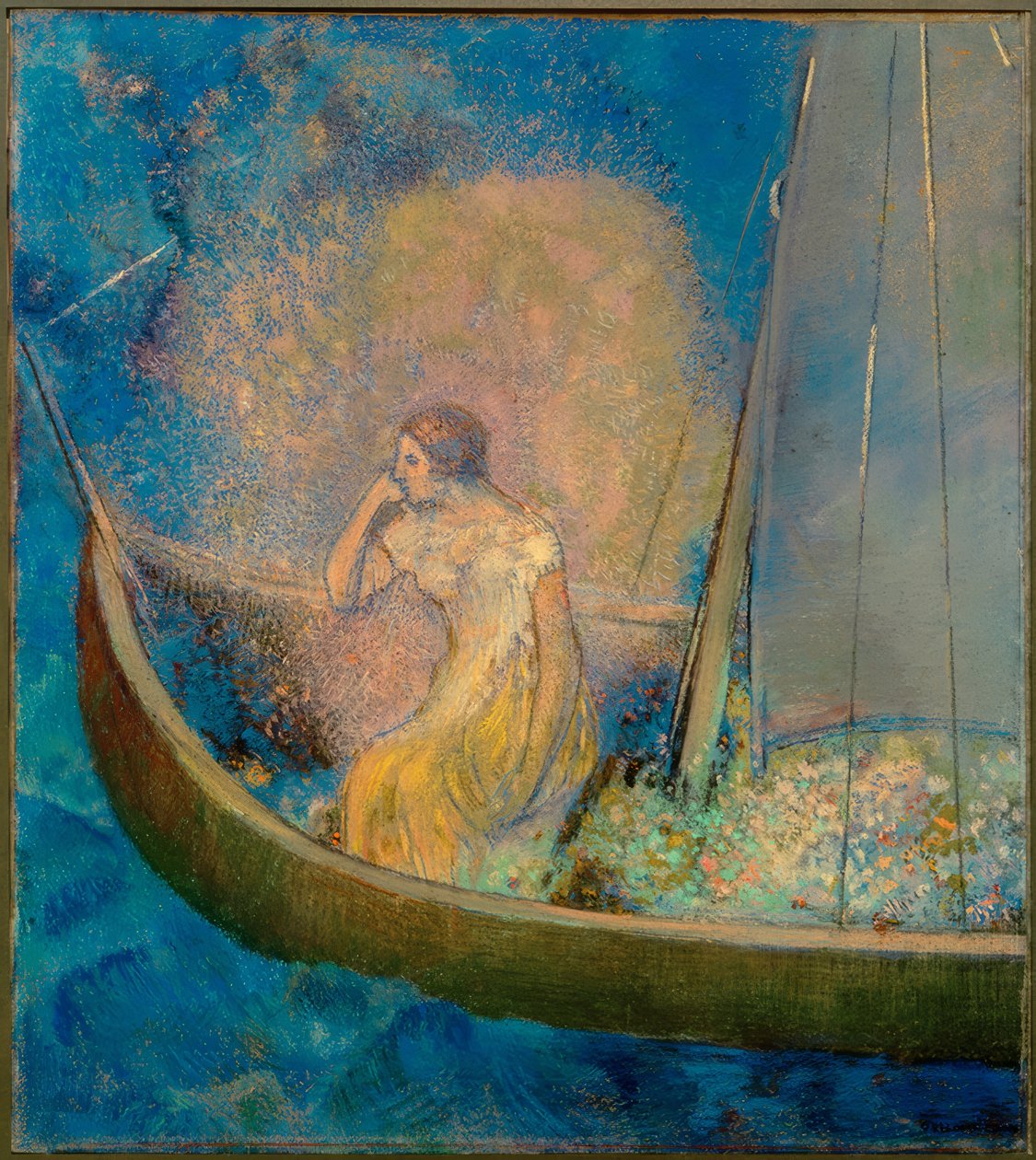
The Barge
By Odilon Redon, 1900
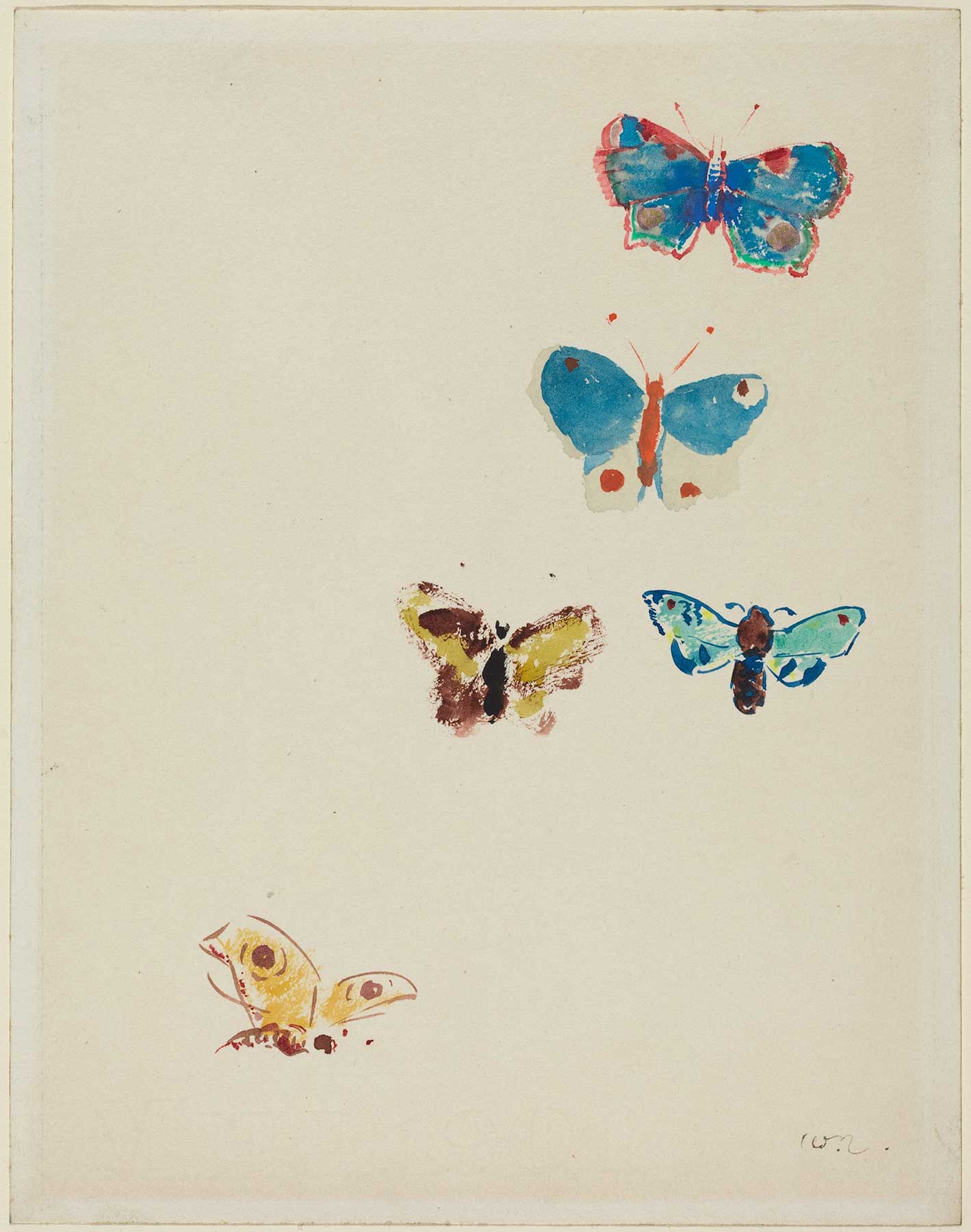
Five Butterflies
By Odilon Redon, 1912
Prompt: Create two abstract pages—one representing a cocooning phase (introspection, stillness, gestation of ideas) and one symbolizing emergence (new beginnings, transformation).
How to Explore:
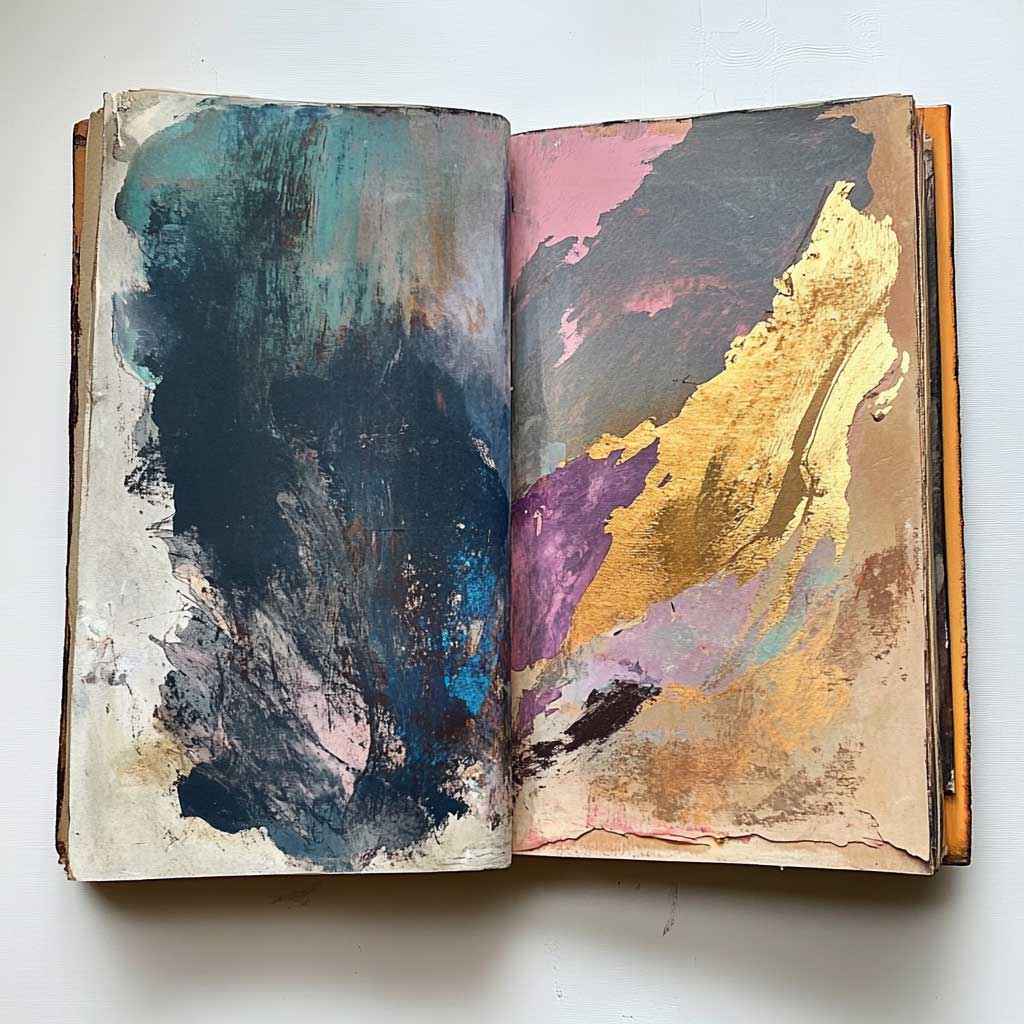
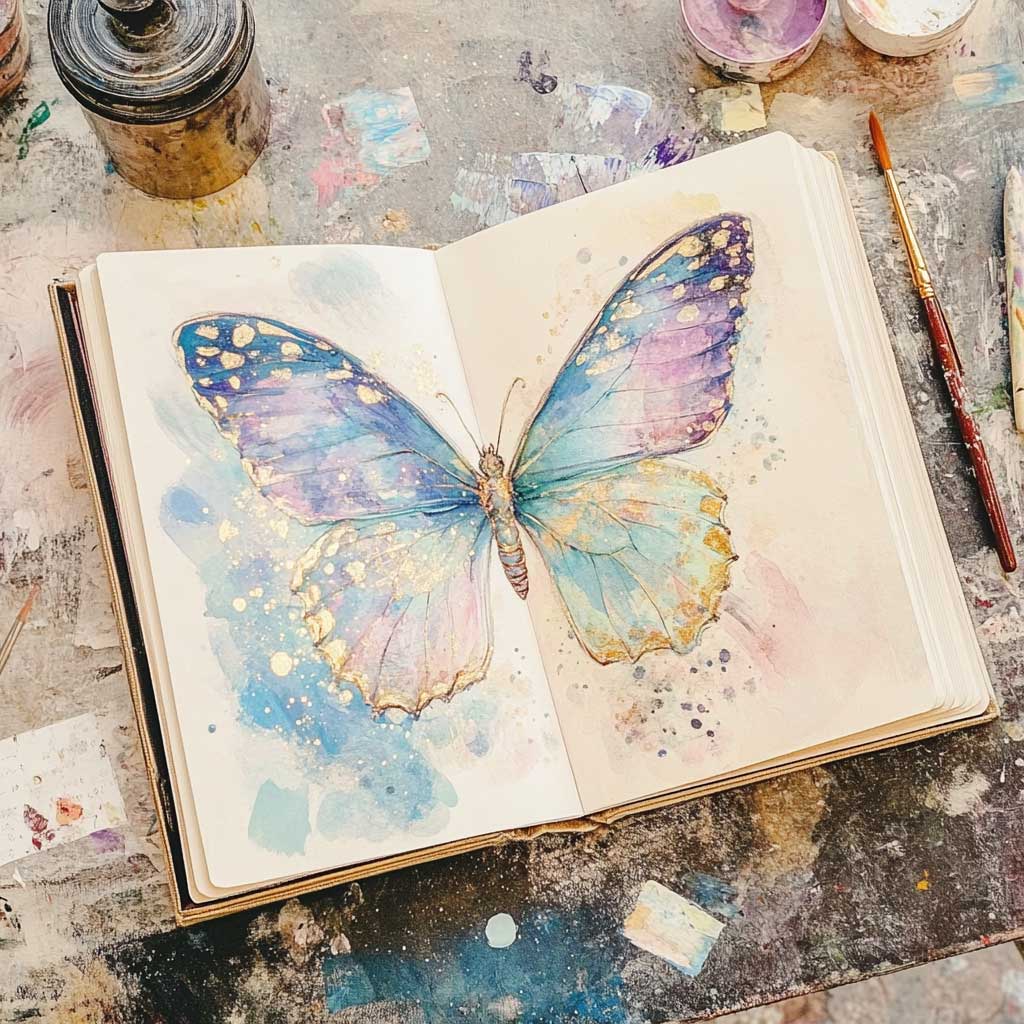
Prompt: Using mixed media or your favorite media create a beautiful fantastical butterfly that expresses your own creative transformation.
How to Explore:
Odilon Redon Connection: Redon often blurred reality and dreamlike imagery—lean into this by making your transformations surreal or symbolic, not just realistic.
Prompt: Choose a simple subject (a flower, a face, a dream symbol) and reinterpret it twice—first in grayscale, then in Odilon Redon’s vibrant, dreamlike color palette.
How to Explore:
Here is a fun reference photo you can use as inspiration if you choose to...

Upon Healing Wings by Donna-Marie Buchanan is a transformative creative class that explores the profound connection between art and healing.
Research shows that viewing and creating art can reduce stress, lower blood pressure, and even promote physical well-being. In this class, you’ll discover five essential properties of healing art and learn how to incorporate them into your own work. Through three guided projects, Donna-Marie will teach you techniques that bring calm, balance, and emotional restoration to your art practice.
Whether you’re creating for yourself or others, this class will help you infuse your work with peace, intention, and healing energy.´éE
You can also listen to this month’s issue of the Studioworks journal. I find I love listening to books, podcasts and music while I draw, paint or go on a long walk. Enjoy.
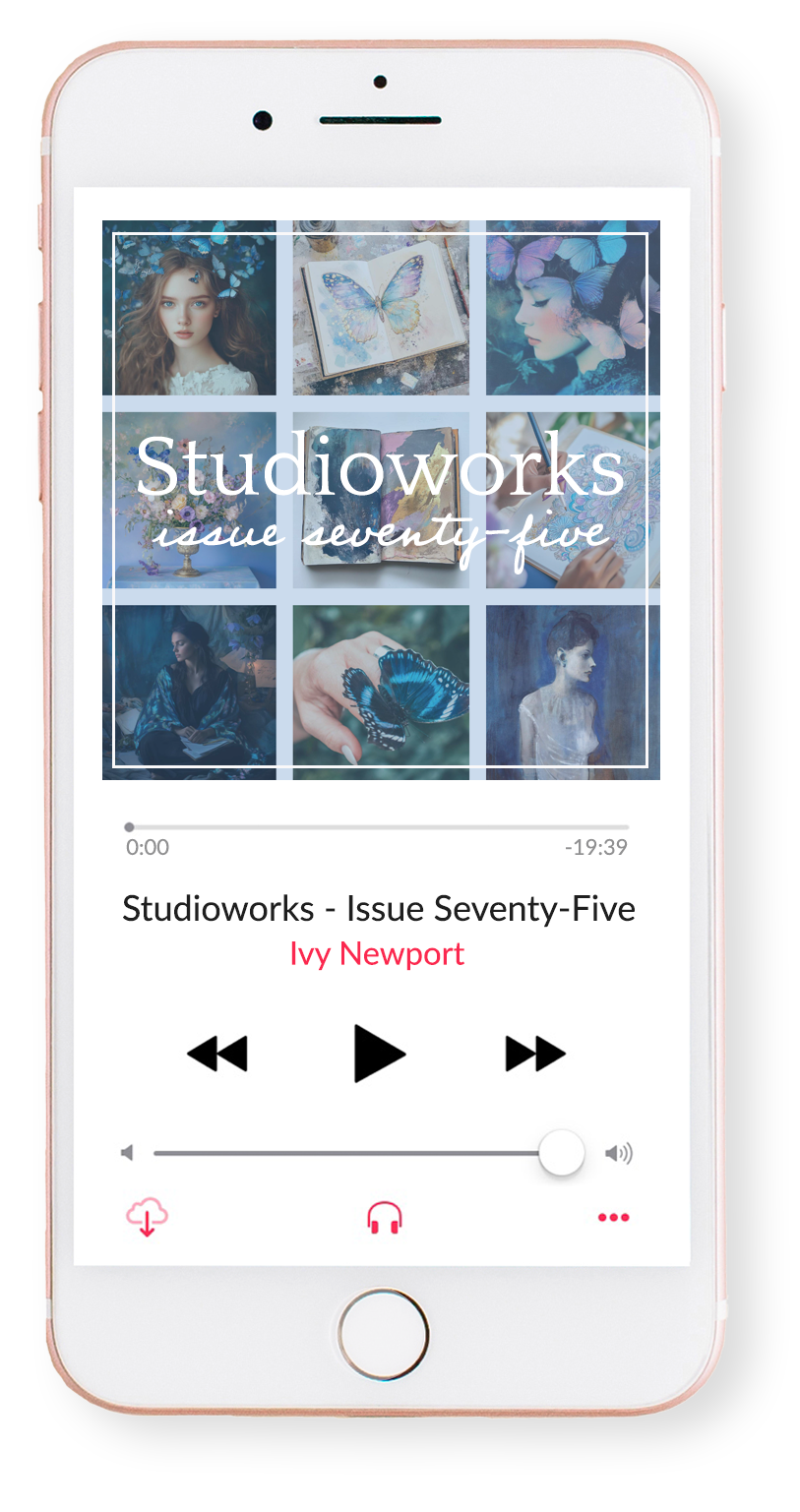
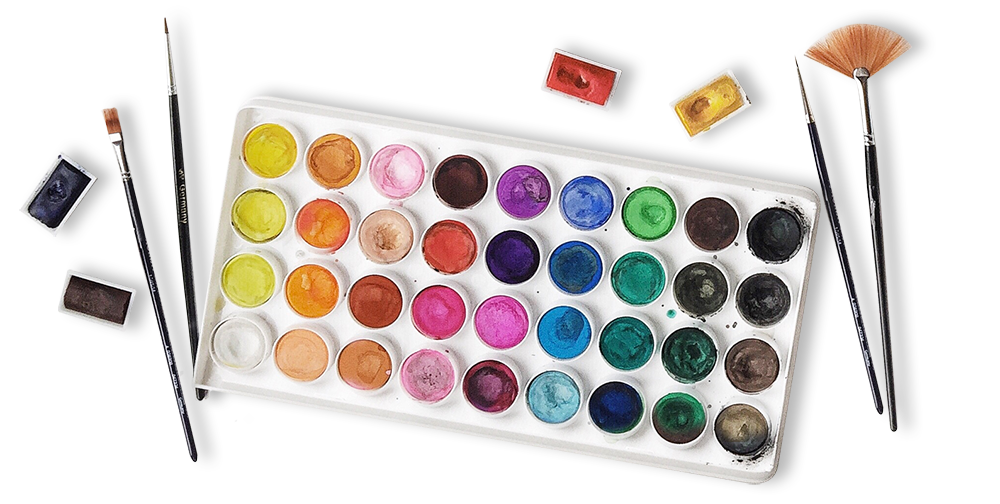
One of my favorite things to do is to curate inspiration. From Pinterest boards to books, resources, playlists and more - I love to share anything that might facilitate learning, expansion, and sparks of curiosity! Being an artist, we naturally crave these things so here are some of this month’s picks from me to you.
I had so much fun curating this list. I hope you enjoy!!
Here are just a few of our fantastic classes! I highly recommend checking them out if you haven’t already. Enjoy!